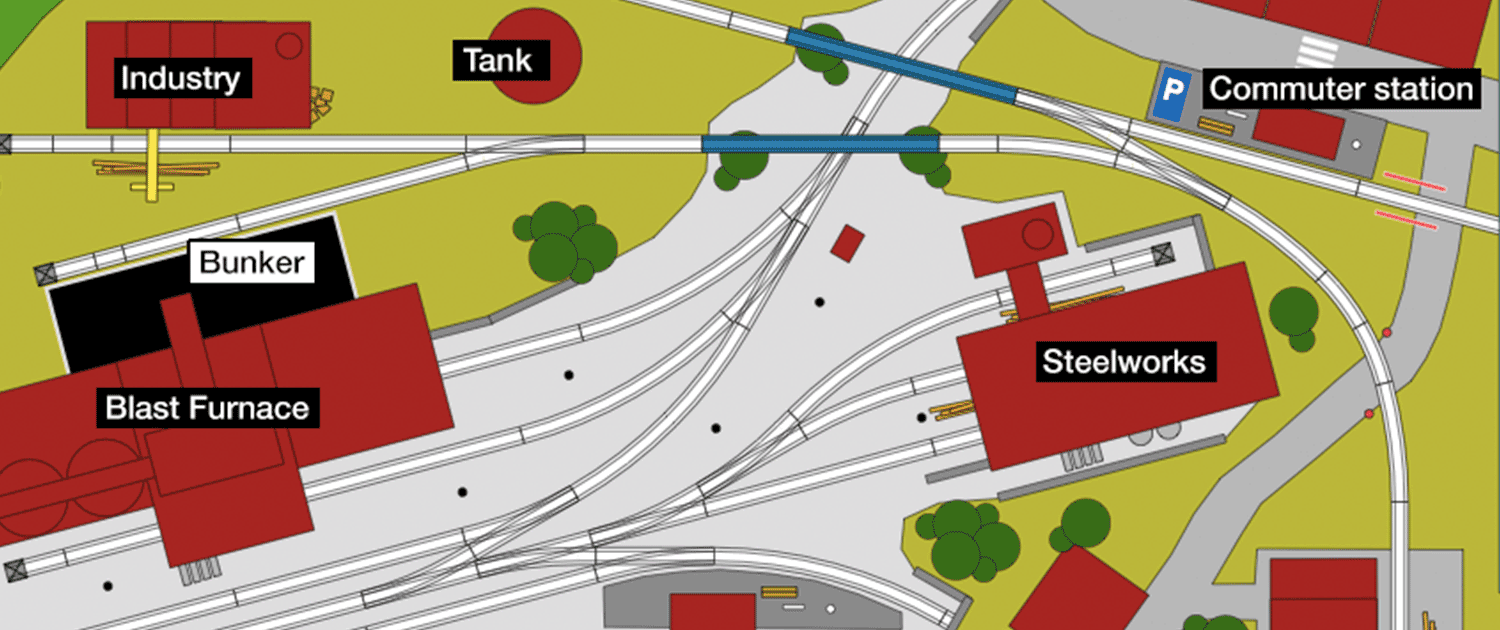N scale switching layout
OK. Usually, a switching layout is a narrow track plan that fits on a shelf. Some turnouts, a few sidings, all on one level. But why not think bigger? Here’s an idea for an N scale industrial layout on 2 levels which offers switching operations galore.
Industrial switching layout N scale
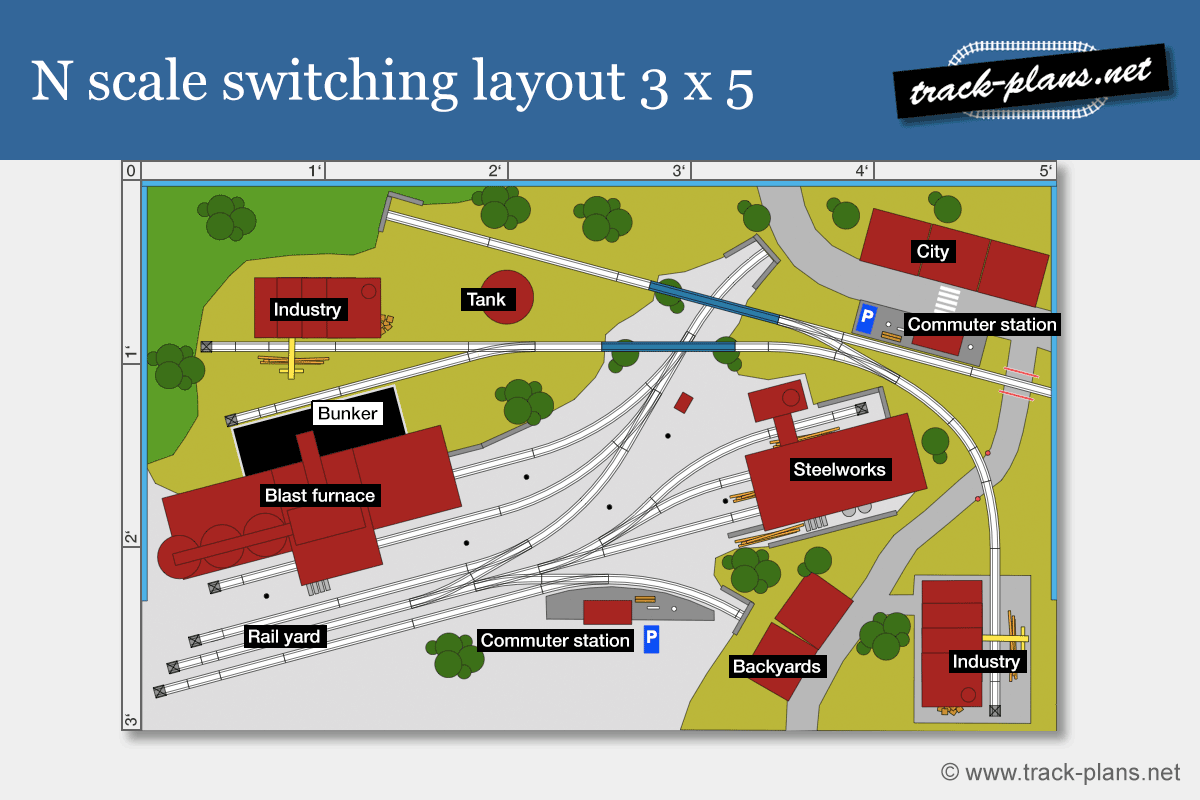
What is it all about? We see an extensive industrial area on 3 x 5. A huge blast furnace and a large steelworks dominate the scenery. Factories, chimneys, tanks, backyards, suburban train stops and tons of sidings also characterize this layout. The track plan runs on two levels.
Since a model kit of a blast furnace has large dimensions even in N scale, it hardly fits on a narrow shelf. I therefore call the whole thing an N scale industrial layout. Nevertheless, it’s also a switching layout, because there are shunting tasks in abundance. There is no runaround loop. Instead, freight wagons go from A to B. Fully loaded wagons there, empty wagons back. Experts also call this a point-to-point layout or a shunting layout.
Level 0 features two large factories with their sidings. A rail yard is also here. Wagons wait at the rail yard, trains are put together or breaked up.
On level 1 we see the bunker for the blast furnace and some peripheral factories. A commuter train brings workers from the city to their jobs.
This industrial layout depicts roughly the process of steel production. Ore, coke or coal go to the bunker. The blast furnace melts them into pig iron or liquid iron. A torpedo ladle trolley brings that to a steelworks or a rolling mill. Finally, some peripheral factories need their steel supplies.
But please: This is not true to the original. It is a fictitious scenery for model railroaders who just want to move a few freight cars in a nice industrial ambience. So this N scale switching layout track plan could also be adapted for any other industrial area such as a refinery, a coal mine or a large automobile plant.
Worth to mention: The route to the upper level leads partly through the blast furnace building. A challenge for model making, but it keeps this industrial switching layout compact. Let’s reveal the secrets:
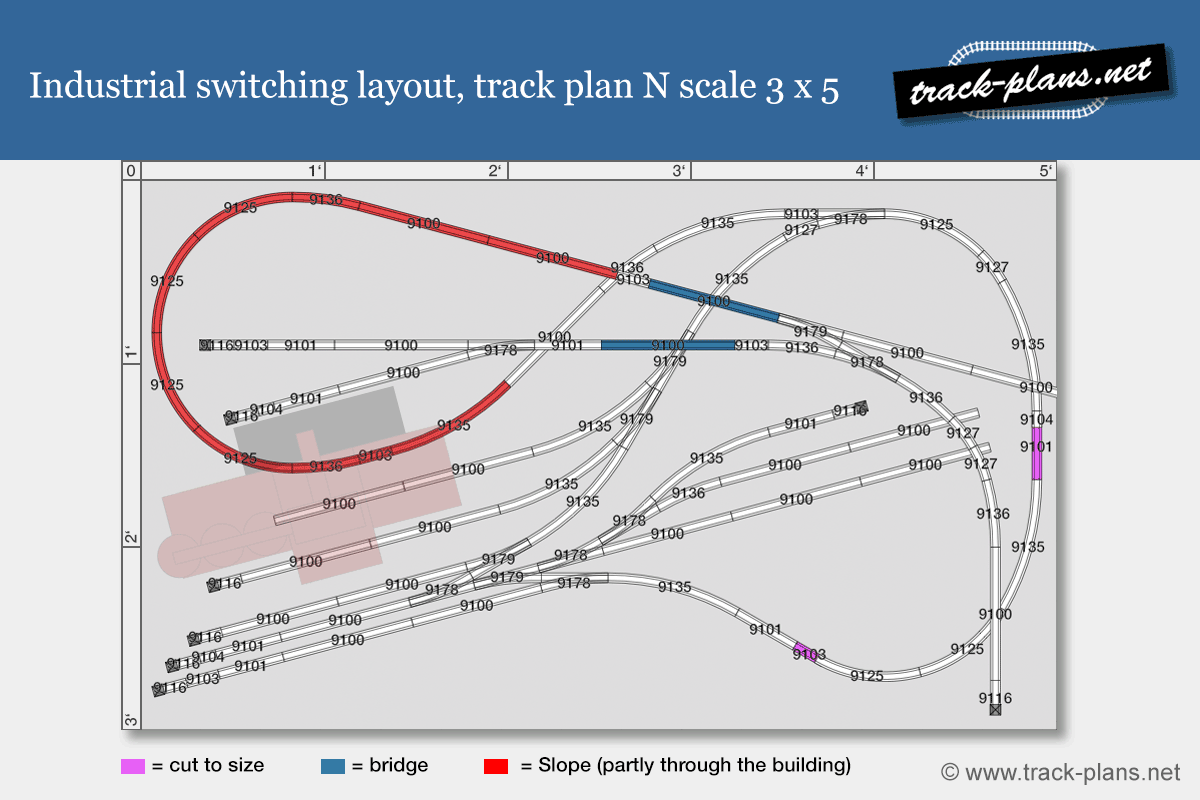
Facts:
- Switching track plan N scale (point to point track plan)
- Size: 3 x 5. This corresponds to 91.4 x 152.4 cm (approx.)
- Fleischmann N gauge (tracks with ready made ballast bed)
- Slight deviations in measurements are possible. Track planning software isn’t 100% accurate. But length modifications is easy for Fleischmann tracks. Just take a fine saw
- Skills: Medium / Advanced. Woodworks for tunnels and slopes. The incline to the left runs inside the blast furnace building. This requires some custom model making
- No crossings, no double switch crossings, no curved turnouts
- 2 bridges
- Track plan design possible with or without a reversing loop
With or without? Shunting like a champion!
On the right-hand side, the route makes a hidden 180° turn. An unorthodox but foxy idea to turn a pulling loco into a pushing loco. For this, the locomotive drives the 180° turn. So you can shunt all wagons wherever necessary!
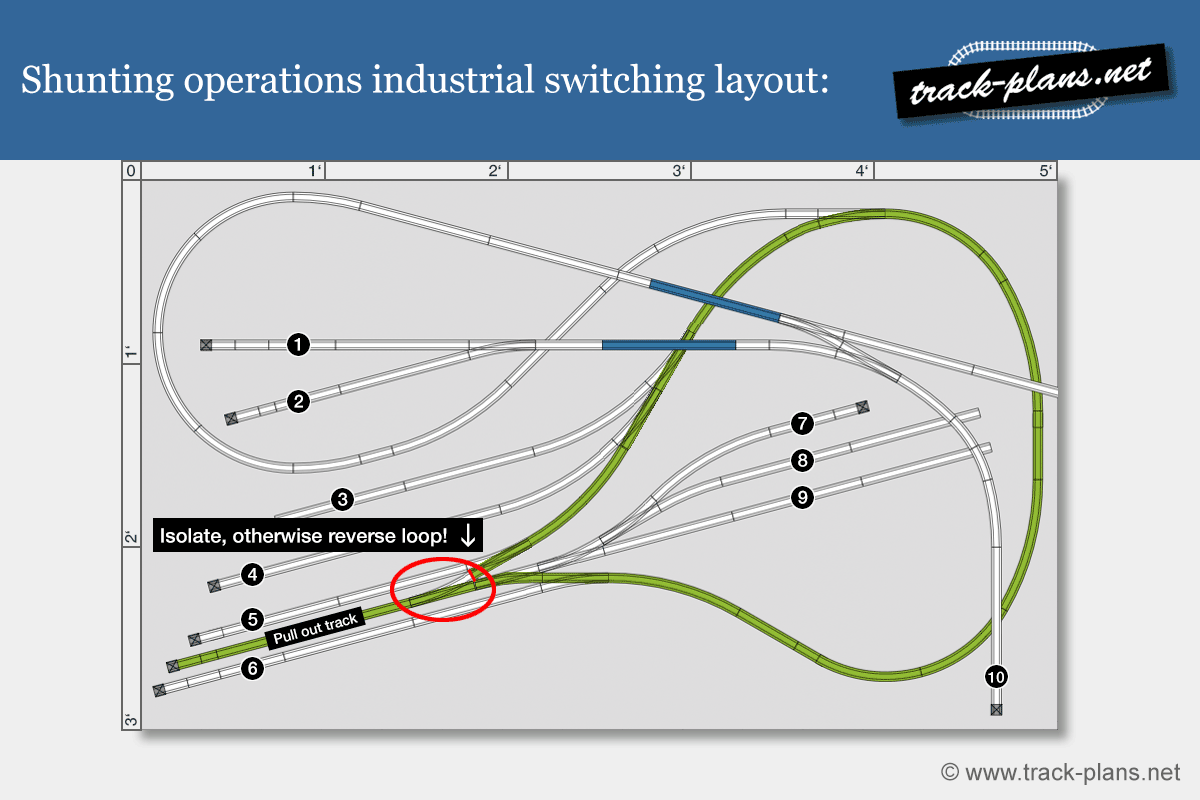
The trained eye will immediately see that the green 180° route is a reverse loop. Advanced model railroaders can do special wiring to avoid electrical short circuit.
But there is also a simple solution for dummies:
“God’s Hand”
Isolate the rails with a plastic joiner and let “God’s Hand” do the rest. See the red marked position.
If the reversing loop is not wired, the locomotive can not pass that point. But why not pushing wagons here by hand to couple them from or to the locomotive? All shunting operations are possible. Albeit a bit tricky, but hey, we want to do something on a switching layout, right?
Now let’s do the shunting puzzle:
- Shunt wagons from sidings 3, 4 or 5 to sidings 7, 8 or 9
- Shunt wagons from sidings 3, 4 or 5 to sidings 1 or 2 (tricky if no reverse loop is wired)
- Shunt wagons from sidings 1 or 2 to sidings 7, 8 or 9 (tricky if no reverse loop is wired)
- Shunt wagons from sidings 1 or 2 to siding 10 (tricky if no reverse loop is wired)
And vice versa. And so on. Got it?
The track-list:
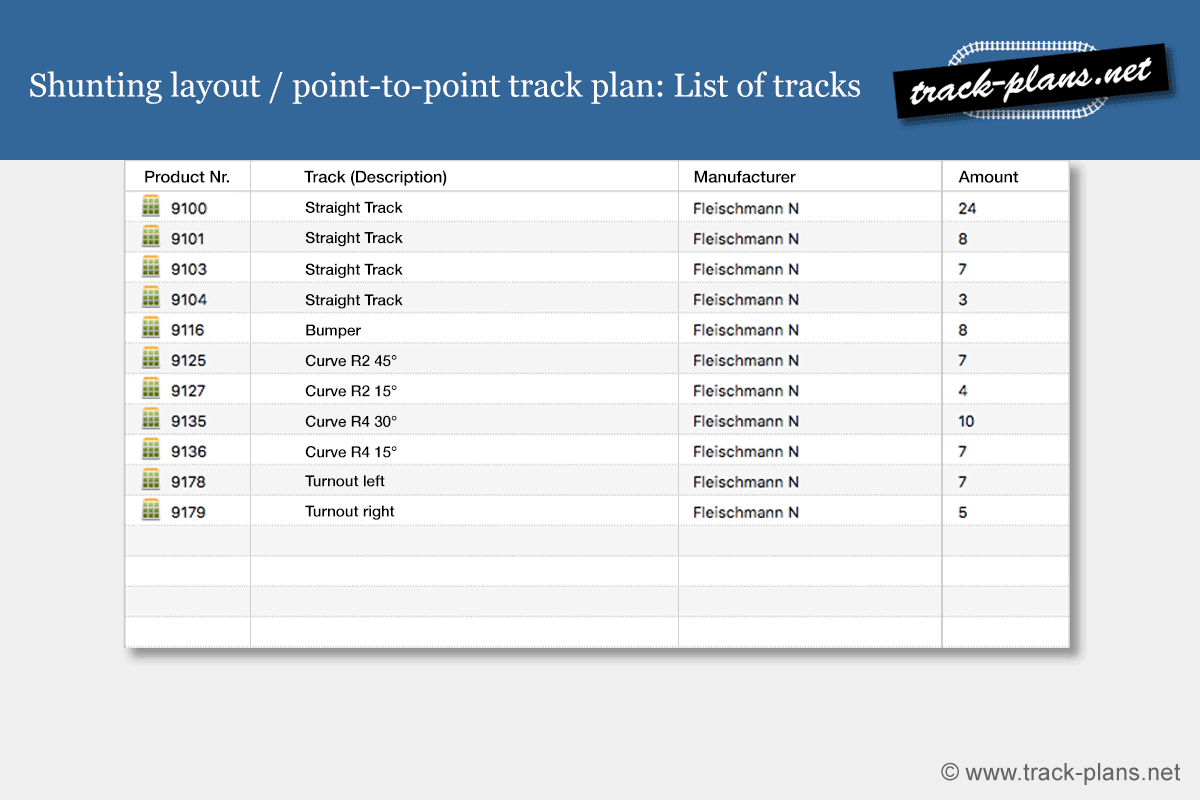
Download this shunting track-plan here:
Download PDF (private use only)
Donations welcome!
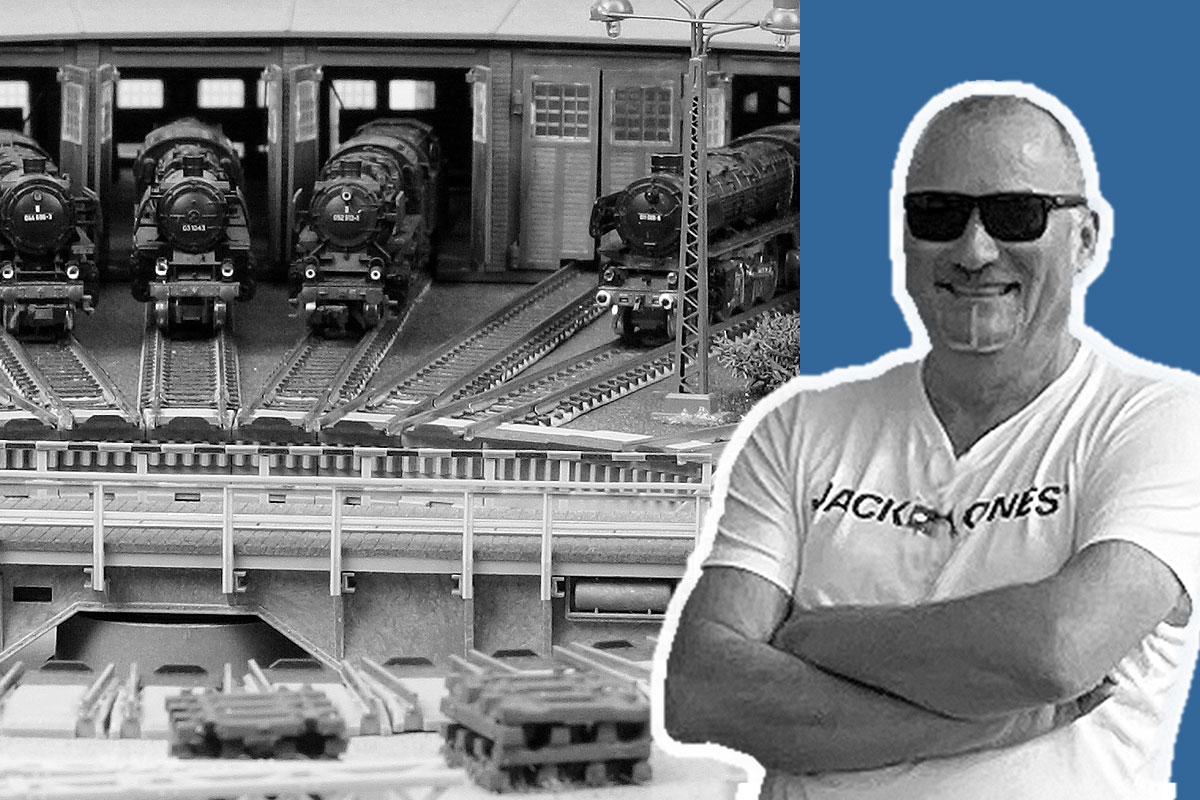
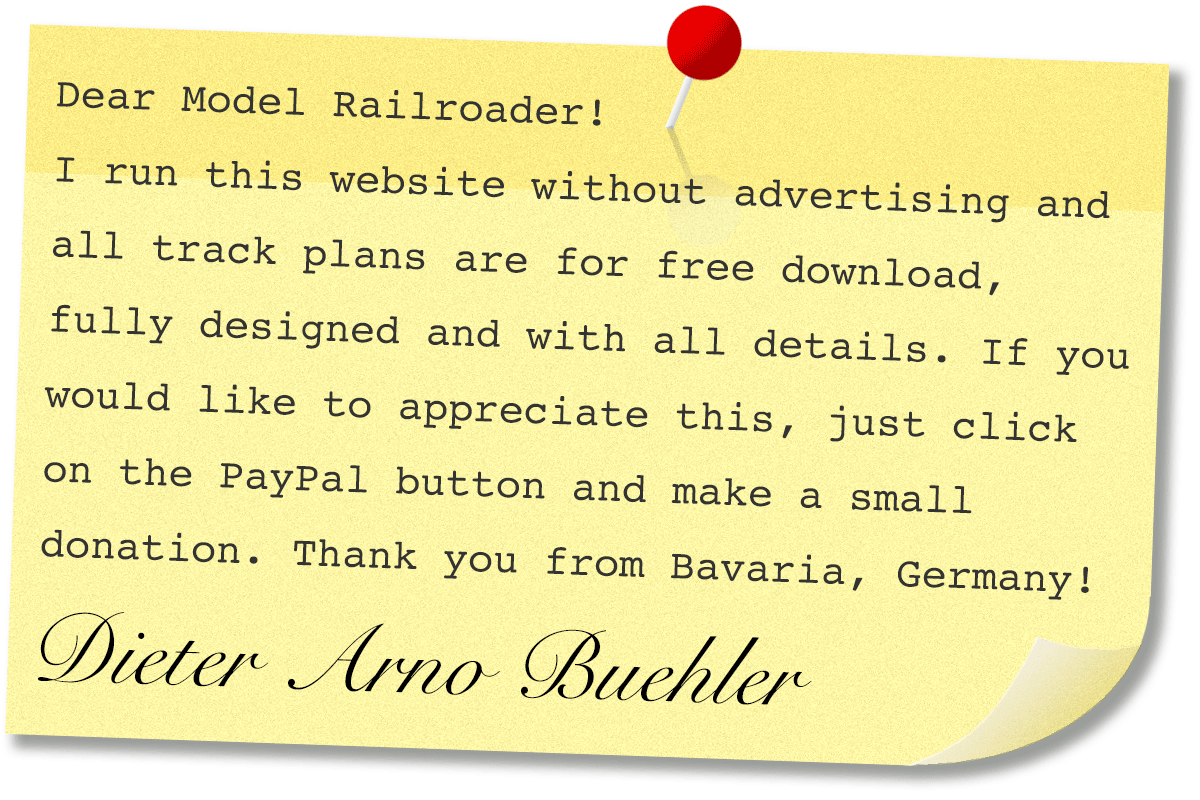
Why should opt for switching layout?
No boring runaround loops
Instead, you have many tasks to complete. Freight cars must be delivered from A to B to C. This requires switching maneuvers, coupling and uncoupling
Perfect for fans of industrial scenes
Usually industrial settings are displayed
Perfect for kitbashing fans
Customize model kits for realistic industry buildings
Compact size
Small switching layouts even fit on a bookshelf
Inspiration
Some fotos from my N scale blast furnace whicht I built many years ago. But it’s not a real layout. I would rather call it a diorama or a “case study”. The realization of these N gauge layouts was more important in the end. But who knows. The idea is paused, not canceled.
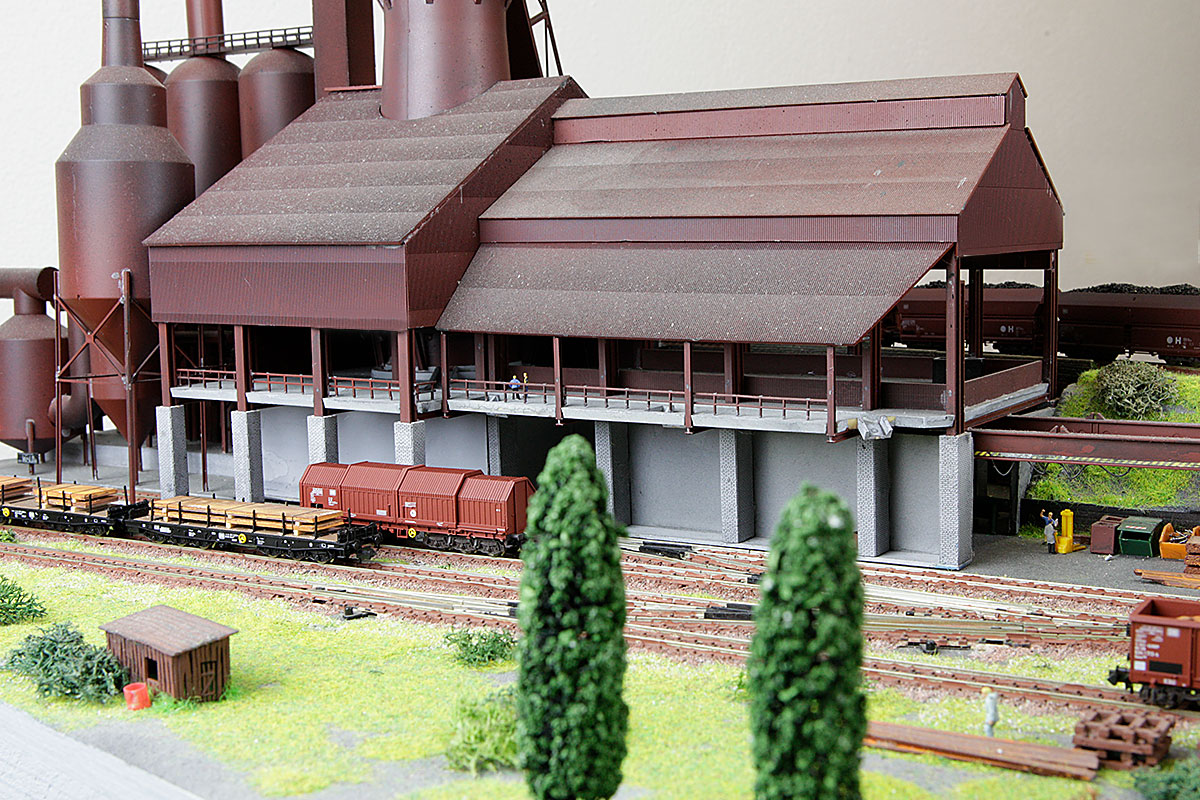
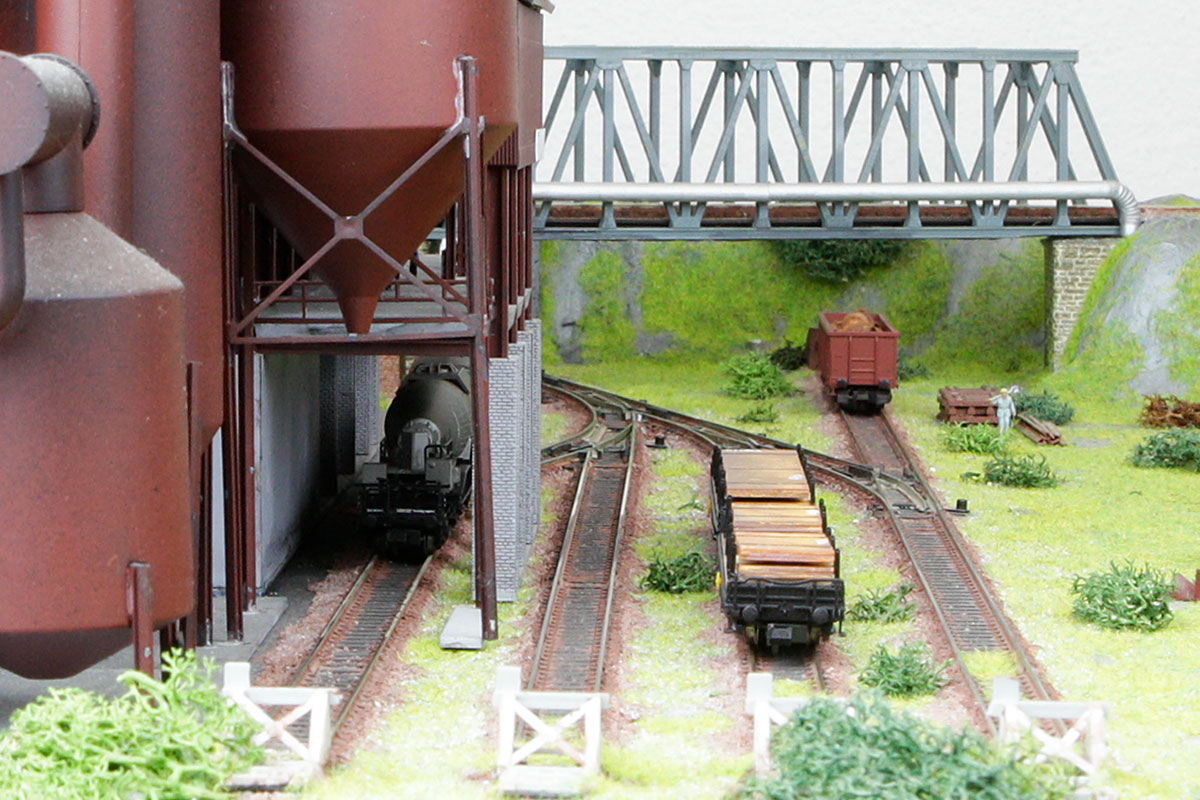
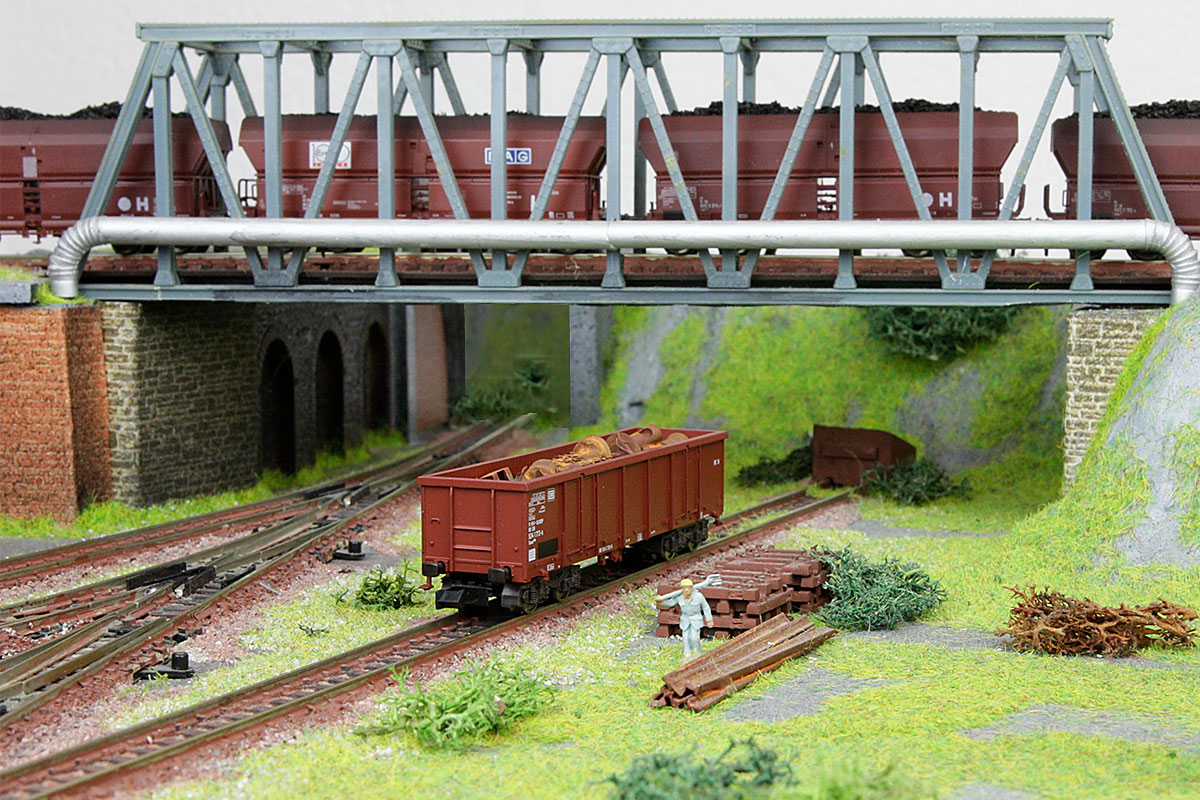
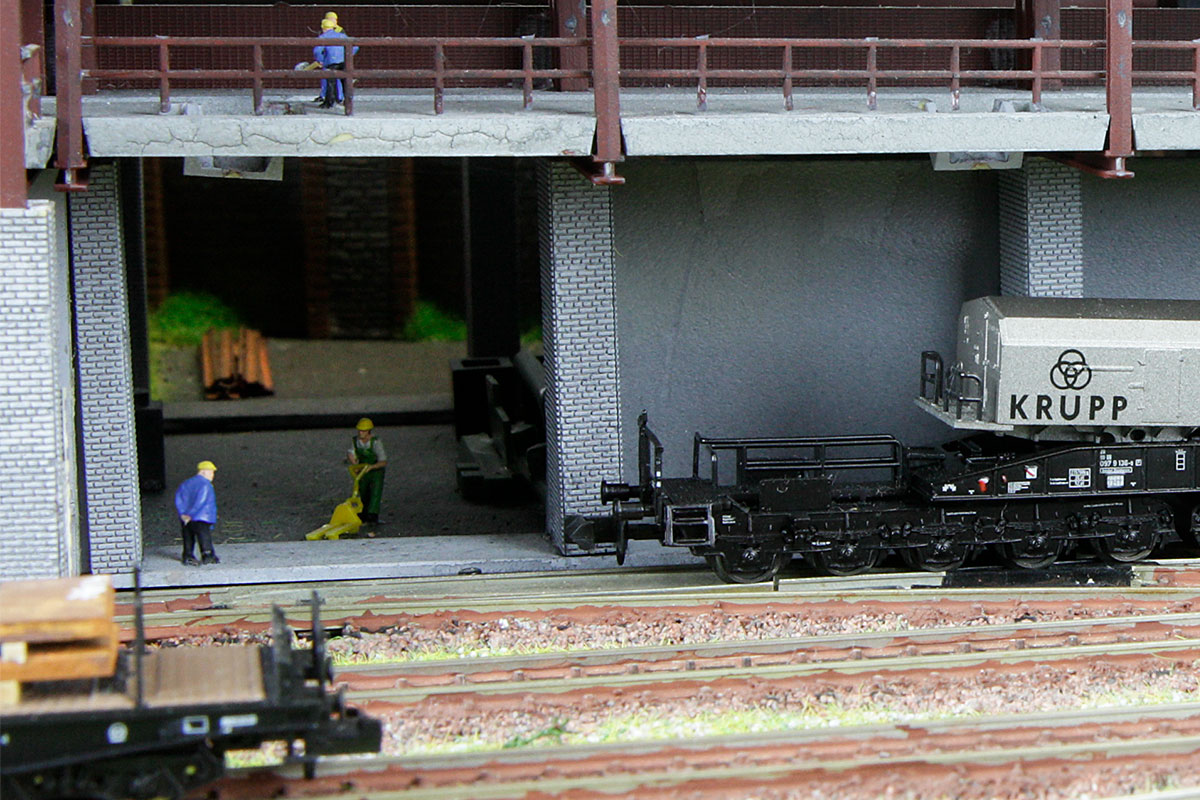
You may also like:
Shunting track plan for a shelf: N gauge shelf layout
Very small switching track plan: Micro N gauge layout
Shunting in a harbor – with nice fotos: N gauge harbor track plan
Hardcore switching puzzle: Timesaver layout

